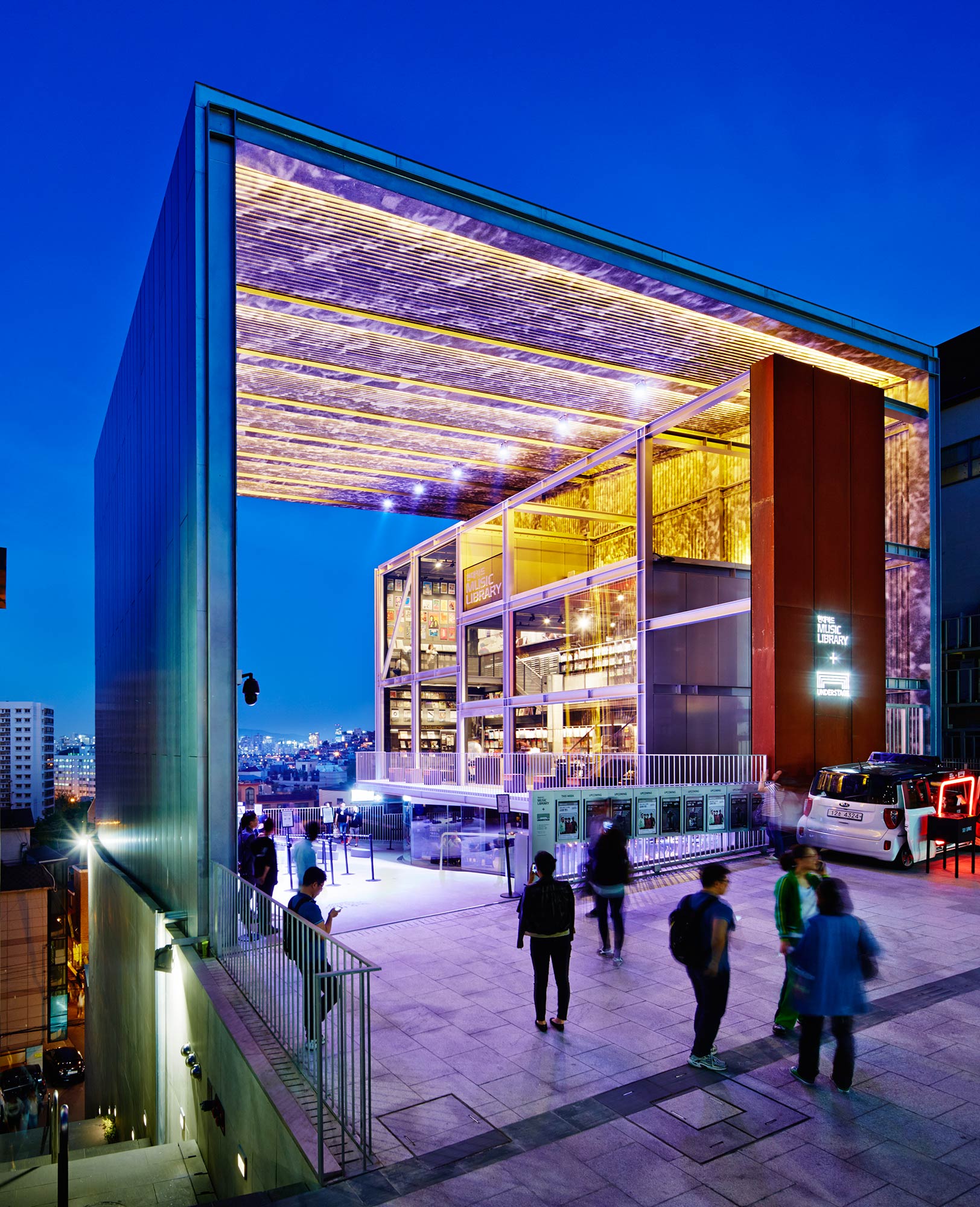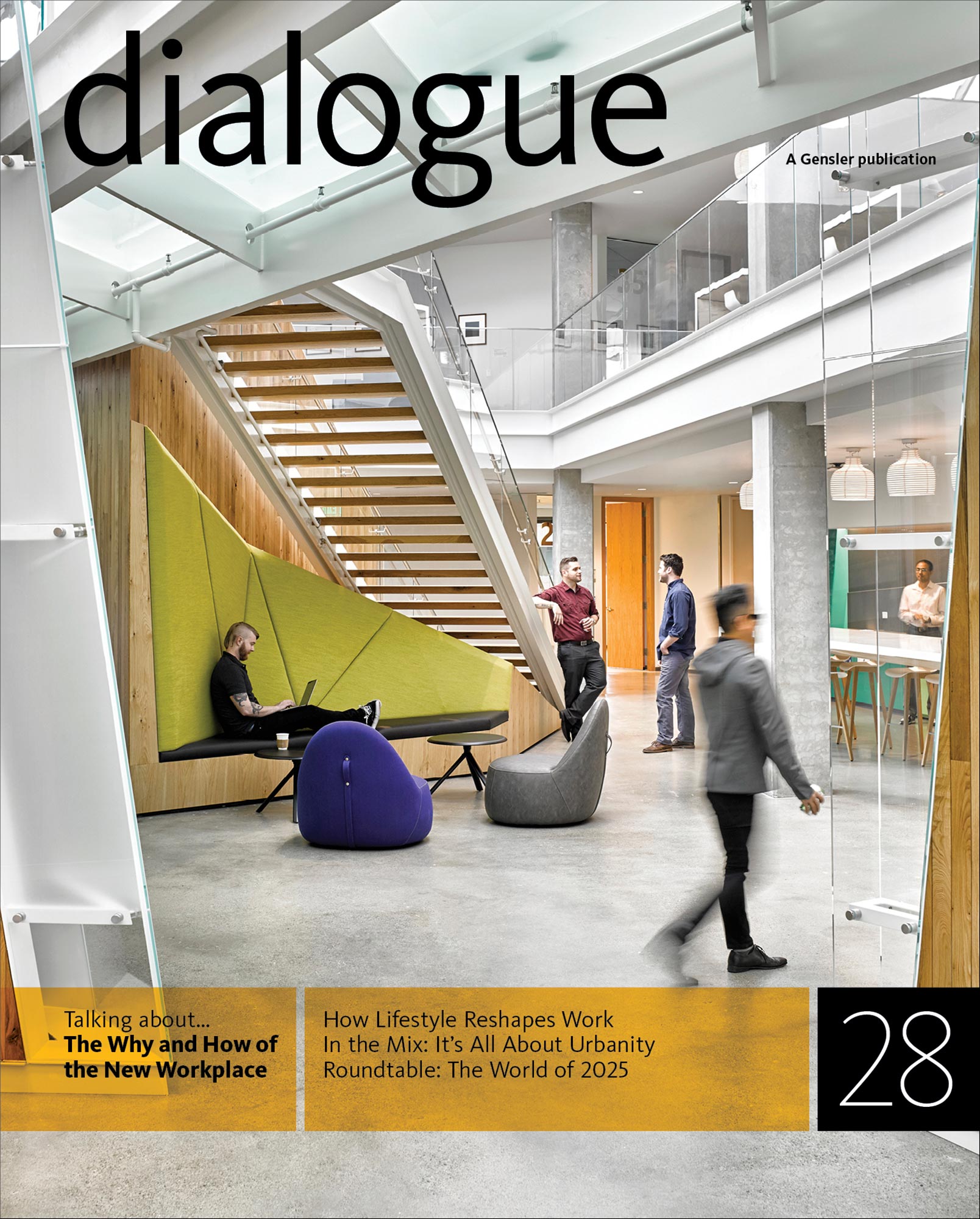An Ode to Vinyl
There’s something interesting happening in the music industry—and for the first time in a long time, it has nothing to do with the Internet. Vinyl album sales are making a strong comeback, suggesting a slow but steady shift from digital downloading to analog listening. And as album sales keep soaring, Korean credit card company Hyundai Card has taken the notion of vinyl revival, quite literally, to a whole new level.
On a steep hillside in the artsy Yongsan district of Seoul, the Hyundai Card Music Library and Understage advances the company’s multiphase “library project,” with design, travel, and cooking libraries either completed or in the works. Home to one of the largest specialized music collections in the world—more than 10,000 records (including many limited-edition LPs), 3,000 books, and every issue of Rolling Stone since 1967—the Music Library was designed with tactility and longevity in mind. “You want to go back again and again because there’s so much depth in the collection,” says Gensler’s Sabu Song. “You’ll never get through everything.”
Enlisted to design the interior space and the exterior positioning, Song and Gensler’s Philippe Paré worked closely with Hyundai Card to integrate the building (designed by Moongyu Choi with Ga.A Architects) with an interior designed to appeal to the senses and create a very strong experience for the user. “Analog media have a special richness in terms of audio quality and physical tactility. They have a lot of texture and imperfection,” Paré says. “There’s a lot of beauty, emotion, and authenticity that comes from imperfection. That’s exactly the feeling we wanted to create throughout the space.”

Selecting timeless materials that would age naturally was equally important as finding installation artists who, aesthetically speaking, could create grungy, yet beautiful, artworks that would smoothly integrate with the building’s interior architecture as well as its modern exterior shell. Gensler commissioned Portuguese street artist Vhils, who successfully brought grit and street credibility to the indoor stage, and also collaborated with French street artist JR, who installed the large-scale photograph on the building’s exterior.
Due to the rarity of its collection, the Music Library is open only to Hyundai Card holders and their guests. But the company is encouraging the public to enjoy its underground performance venue, Understage. Designed to give back to the community, Understage is intended for small-scale concerts and events, with amenities such as practice studios, an artist lounge, and a café. “The rehearsal studios are made available to emerging and independent artists, so artists who might not be able to afford equipment or space to practice can hone their craft and then perform,” Song explains.

The project’s underlying goal was to create an approachable experience that would appeal to a broad cross-section of people, says Song. “These facilities are designed in a way that will get people interested in art and music; people who perhaps would have paid little attention before stepping foot into the place,” she adds. “At the same time, a connoisseur can find something that is very satisfying.” Ultimately, by creating these libraries that open paths to an enriched lifestyle, Hyundai Card is building an emotional connection with its customers. As spokesperson Fiona Bae told Wallpaper magazine, by offering card members new experiences, the company enhances their lives—which elevates the company and the brand. “It’s a compelling argument,” Paré affirms.
Aryn Beitz is a design writer based in New York City.

